Dr. King's home page | List of publications
Epilogue (autobiographical notes)
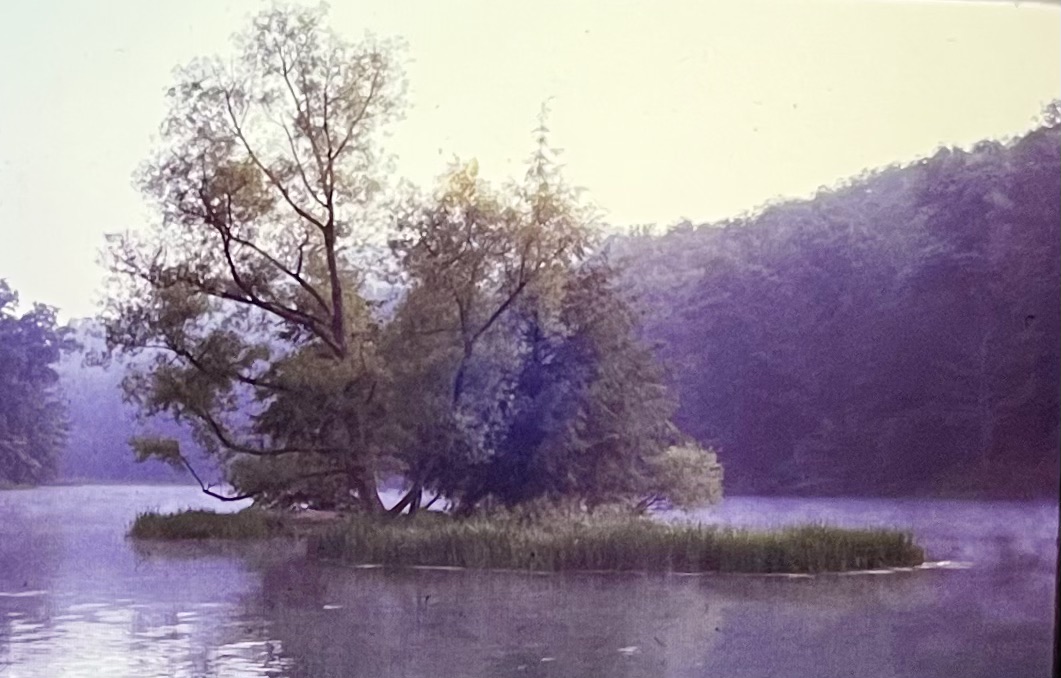 For much of my academic career, I aspired to little more than securing a position that could utilize my academic ability while providing a reasonably comfortable situation for myself and my family. Yet my entire career developed from interests that emerged much earlier in my life, as described below.
For much of my academic career, I aspired to little more than securing a position that could utilize my academic ability while providing a reasonably comfortable situation for myself and my family. Yet my entire career developed from interests that emerged much earlier in my life, as described below.
I am indebted to my parents, to my many teachers, and to my wife, all of whom encouraged and supported pursuits which eventually led me across fields of neurobiology, histology, fly anatomy, and evolutionary genetics. I also acknowledge with gratitude my academic ancestors beyond those mentioned individually below. My academic family tree can be found by entering my name, David G. King, into the search box at Neurotree.org. Surprisingly (at least for me) it takes only seven student-to-mentor steps to connect me with Thomas Henry Huxley (and hence to Charles Darwin)!
The autobiographical narrative below is offered to suggest some of the circumstances that led me into my career. Additional background detail can be found in my annotated list of publications. I have written these self-indulgent ramblings primarily for myself; I have no idea who else, if anyone, might care.
I sang of leaves, of leaves of gold, and leaves of gold there grew:
Of wind I sang, a wind there came and in the branches blew. . .
O Lórien! The Winter comes, the bare and leafless Day;
The leaves are falling in the stream, the river flows away.Galadriel's Song
The Fellowship of the Ring
J.R.R. Tolkien
Nature study and insects | Ecology | Neuroscience |
Histology and pedagogy
Genetics | Evolution | History and philosophy | Coda
Nature study and insects
"The Child is the father of the Man," William Wordsworth.
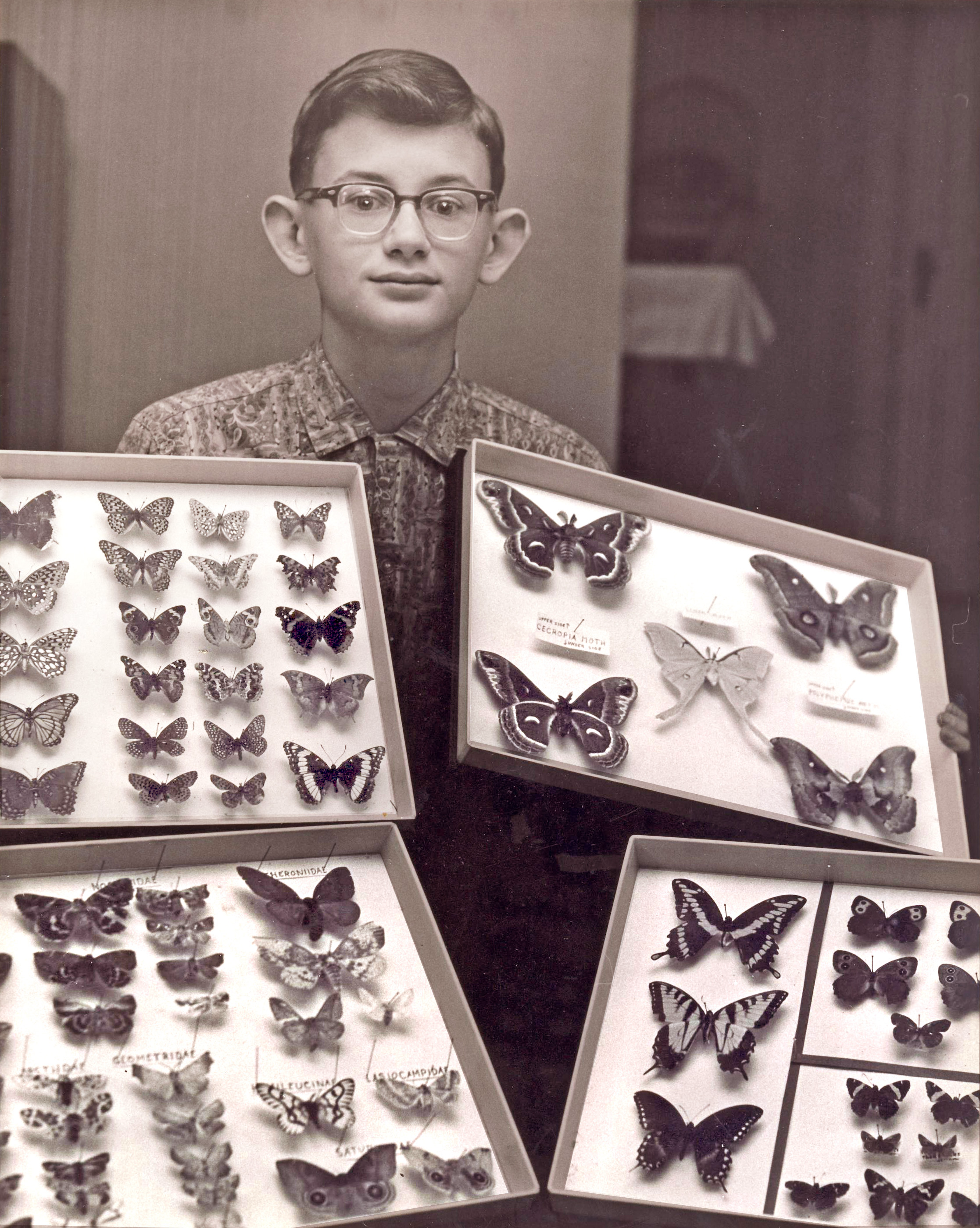
I grew up in Knollwood, a suburban neighborhood within a mostly-rural county near Dayton, Ohio. (My father and my future father-in-law were both employed nearby at Wright-Patterson Air Force Base.) As a very young child, before entering grade school, I had already recognized "nature" as my principal interest. When asked what I wanted to be when I grew up, I would answer, "naturalist."
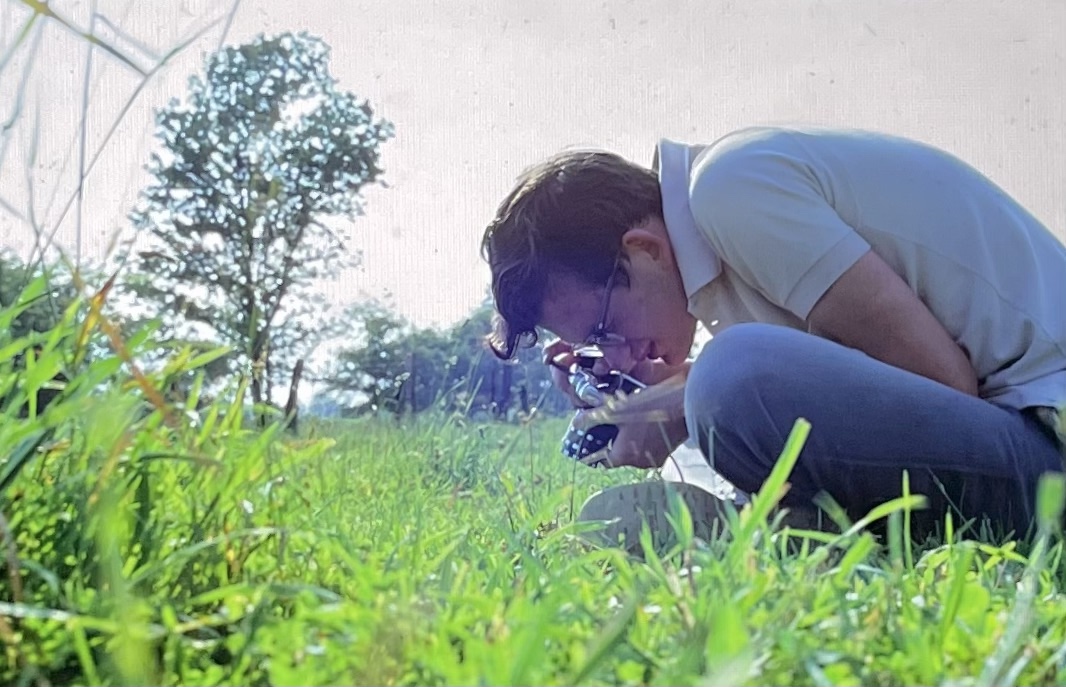 |
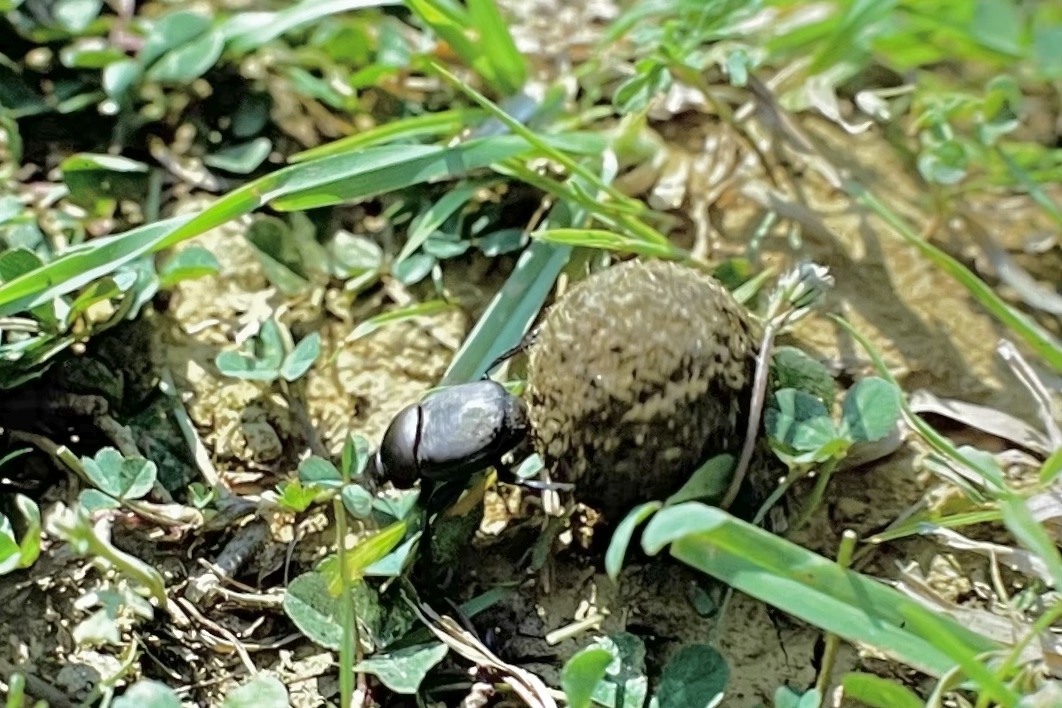 |
Annual visits to my paternal grandmother's farm in western Kentucky provided opportunities for exploration and discovery, of toads and tumblebugs, crayfish castles and mud-wasp nests. At Audubon State Park in Henderson, where my father's cousin King Benson was park naturalist, I was enchanted by a display of exotic insects housed in the park museum's splendid round tower (at left). I was soon enthusiastically collecting insects myself. That's me at age 14 (above left), with a few of my carefully-mounted specimens. Within a couple years I had transitioned from insect collecting to insect photography.
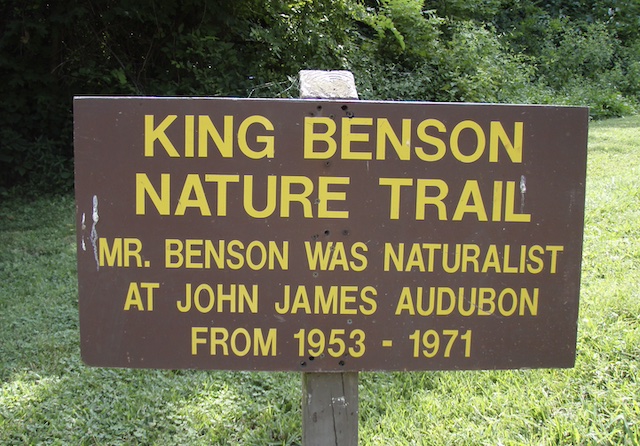 |
|
|
 Family car trips to national parks (Great Smoky Mountains, Everglades, Mesa Verde, Rocky Mountains, Yellowstone, Tetons, Dinosaur,
Carlsbad Caverns) greatly enriched my exposure to wild nature. Every summer, my family would also spend a week in a cabin at
Lake Hope State Park in the hills of southeastern Ohio (image at the
top of this page), which was a favorite venue for hiking in the woods, for learning from park naturalists, and for collecting and
photographing insects (including fireflies, at right).
Family car trips to national parks (Great Smoky Mountains, Everglades, Mesa Verde, Rocky Mountains, Yellowstone, Tetons, Dinosaur,
Carlsbad Caverns) greatly enriched my exposure to wild nature. Every summer, my family would also spend a week in a cabin at
Lake Hope State Park in the hills of southeastern Ohio (image at the
top of this page), which was a favorite venue for hiking in the woods, for learning from park naturalists, and for collecting and
photographing insects (including fireflies, at right).
By my early teens, I had begun reading classic nature writers: Henry David Thoreau, Charles Darwin, John
Burroughs, John Muir, Jean-Henri Fabre, Edwin Way Teale. Before I could drive a car, I explored the countryside
within a couple dozen miles of home on my single-speed, coaster-brake bicycle. I pedaled for many pleasant
hours among farms and woodlots, occasionally crossing streams on weathered covered
bridges.
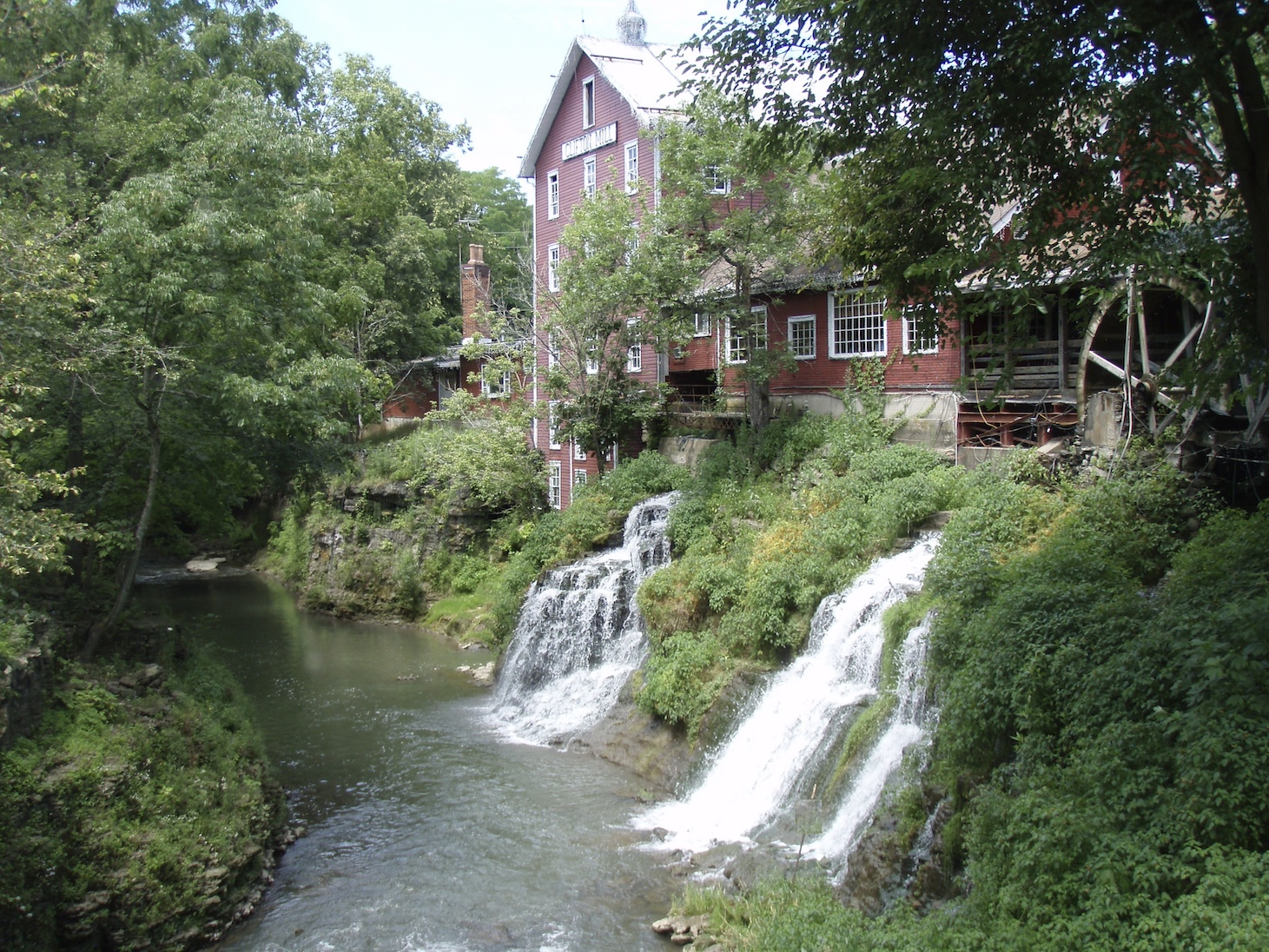
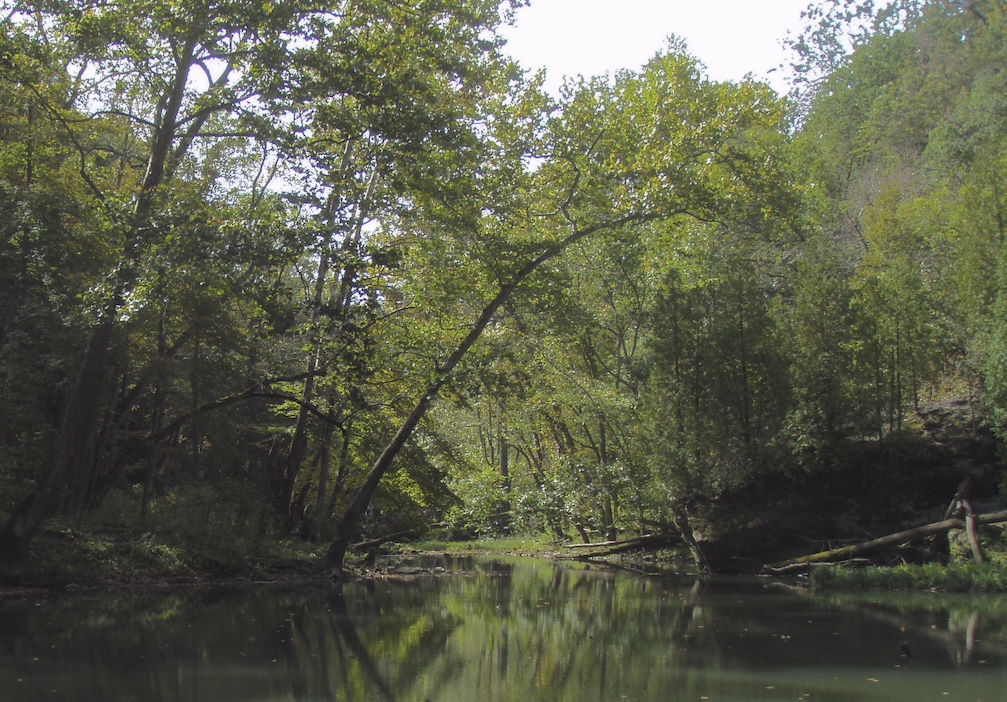 Glen Helen and Bryan Park were favorite
destinations for solo picnics and nature walks. (At least as recalled through the mists of nostalgia, Beavercreek Township
and the rest of Greene County hold for me somewhat of the character of the Shire surrounding
Hobbiton, which may help explain my later fondness for the writings of J.R.R. Tolkien.)
Glen Helen and Bryan Park were favorite
destinations for solo picnics and nature walks. (At least as recalled through the mists of nostalgia, Beavercreek Township
and the rest of Greene County hold for me somewhat of the character of the Shire surrounding
Hobbiton, which may help explain my later fondness for the writings of J.R.R. Tolkien.)
Ecology
I was definitely nerdy at Beavercreek High School, wearing a pocket-protector filled with multicolored pens and pencils, sporting a slide-rule holster on my belt, and memorizing a hundred decimal digits of π. Yet despite an affinity for math and physics, I learned in biology class that the scientific discipline which most closely aligned with my nature-study interest was called "ecology."
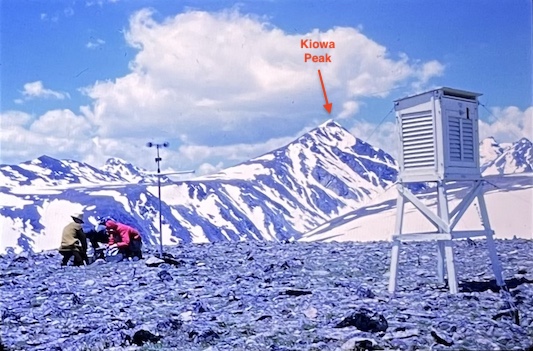
During my junior year (1965), I was accepted into a summer-long ecological research program, sponsored by the National Science Foundation, at the Mountain Research Station of the University of Colorado's Institute of Arctic and Alpine Research. Weekdays took me above timberline, assisting with a floristic survey of plant life on the alpine tundra of Niwot Ridge (at left).

I especially appreciated my introduction to alpine tundra "cushion plants." A single individual might be over a century old, yet extend only few inches across and just an inch or so tall. My favorites were moss campion and alpine forget-me-not.
Weekends were free for ad lib tramping about the surrounding landscape, including two visits to the top of Kiowa Peak (in the background of photo at left). All summer long, Navajo Peak (image at right, also in the distance just right of the weather-instrument box in the photo at left) stood as a challenge on the Continental Divide at the west end of Niwot Ridge. On our last weekend of the summer, an overnight hike with one companion took us to its summit. Standing there, at 13,409 feet, was literally the highpoint for my entire lifetime.
I am profoundly grateful not only for the ecological research experience but also for such a grand opportunity to hike in the Colorado mountains. However, during this long summer I discovered that serious professional fieldwork could suppress simple, contemplative appreciation of nature. So that wild nature might remain primarily a setting for recreation and joy, I concluded that I might prefer a career of indoor labwork in some other area of biology. (Nevertheless, near the end of my professional career I reconnected with these beginnings, publishing an essay in 2025 in the journal Trends in Ecology & Evolution.)
Neuroscience
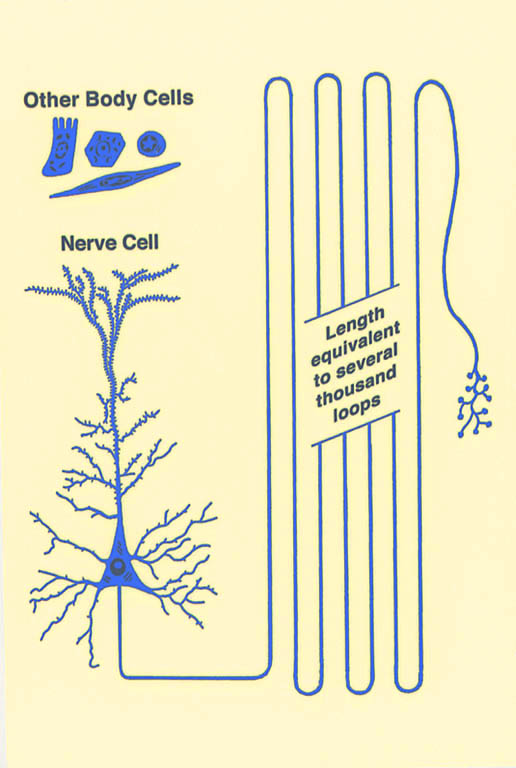
Already in high school, even while pursuing my interest in ecology, I chose topics in neuroscience for two term papers. One of these topics, "Neural processes involved in vision," was prompted by an article in Scientific American (November 1963), written by future Nobel laureate David Hubel. I was fascinated that neurophysiology could reveal the information-processing abilities of individual cells in visual cortex. A couple years later at Purdue, while reading The Machinery of the Brain by Dean Wooldridge, I began to imagine neuroscience as a plausible field for graduate study. When Hubel's colleague Torsten Wiesel visited Purdue for a seminar, I was disappointed to learn that Hubel and Wiesel's laboratory did not train graduate students.
My neuroscience mentor at Purdue, Prof. Gopal Das, arranged financial support from the NSF for a summer project under his guidance, preparing and examining histological sections of rat cerebellum. That experience conferred on me a distinct disinterest in histological protocols, since these provided little clear insight into the behavior of living nerve cells such as those Prof. Hubel had described in Scientific American. After skimming through a catalog of neuroscience graduate programs around the country, I applied to the newly-organized Department of Neurosciences at the University of California San Diego. The diverse faculty in this department could provide opportunities for exploring several different specialities, including cellular neurophysiology. This choice proved fortuitous, not least because at this institution "one of the major revolutions in neuroscience" was underway.
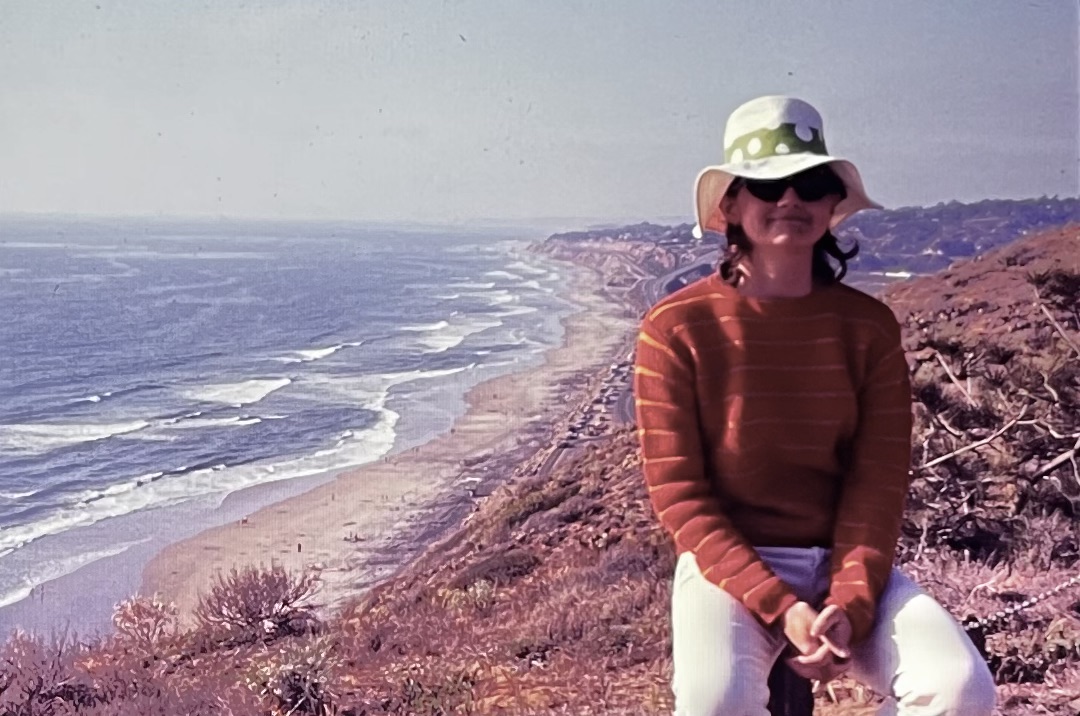 After finishing the coursework required for graduation from Purdue with a major in biological sciences, I had intended to indulge in a few elective courses such as entomology. But since all my requirements had already been completed, Purdue pushed me out with a B.S. degree after only seven semesters. So, in January of 1970, with my new wife (who had been my date to the senior prom at Beavercreek High School), I headed west toward the UCSD campus in La Jolla. Neither of us had ever seen the Pacific Ocean.
After finishing the coursework required for graduation from Purdue with a major in biological sciences, I had intended to indulge in a few elective courses such as entomology. But since all my requirements had already been completed, Purdue pushed me out with a B.S. degree after only seven semesters. So, in January of 1970, with my new wife (who had been my date to the senior prom at Beavercreek High School), I headed west toward the UCSD campus in La Jolla. Neither of us had ever seen the Pacific Ocean.
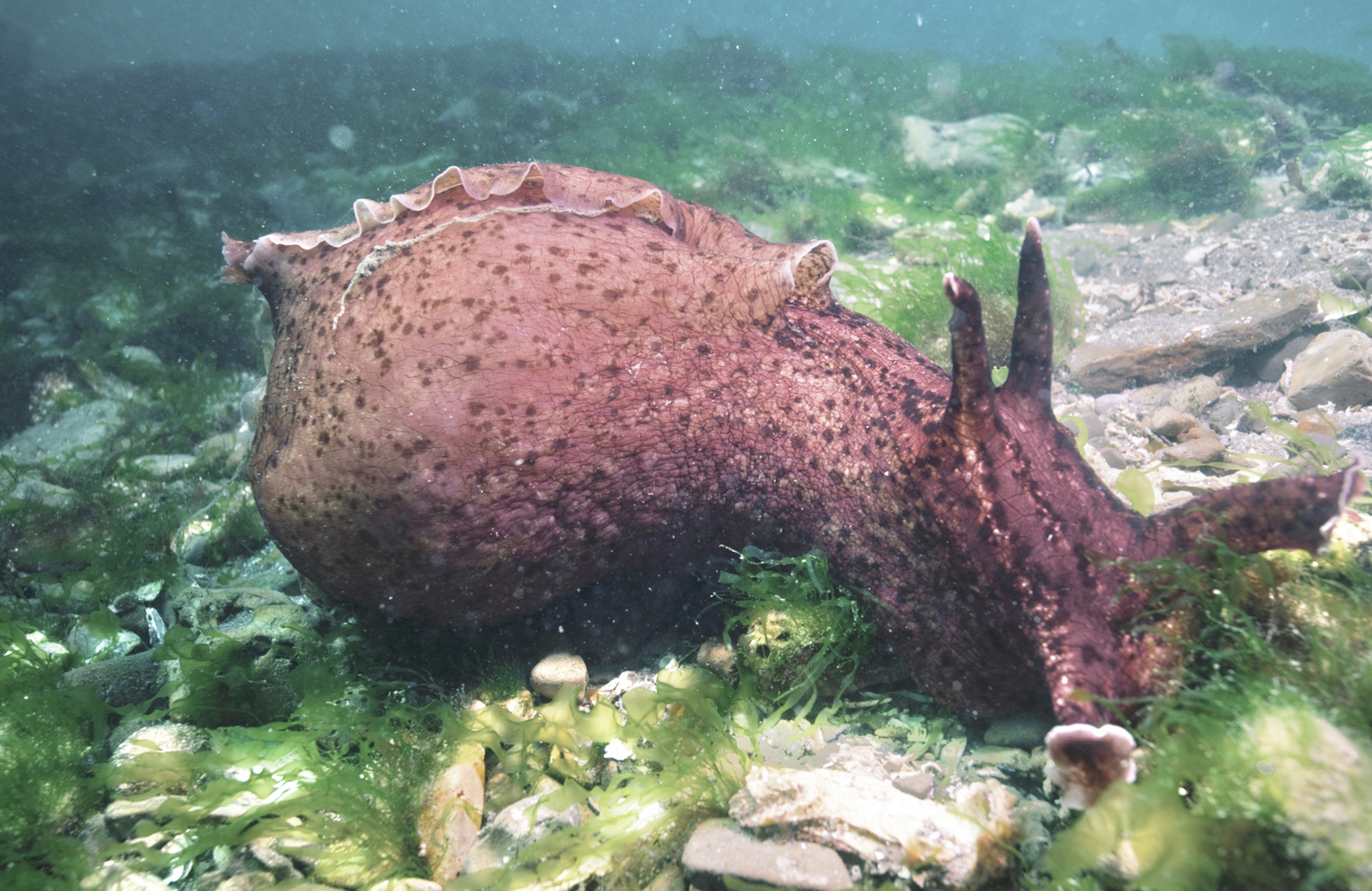
|
|
Aplysia californica
|
During my first graduate school "rotation" in Prof. Ted Bullock's laboratory at UCSD, I was introduced to Aplysia californica, the California "sea hare." I had first encountered Aplysia at age 14, in the pages of Darwin's Voyage of the Beagle; at that time I hadn't imagined that in just a few years I would be collecting these marvellous molluscs from California tidepools. I was astonished to learn that unique individual nerve cells could be readily located and identified in this animal. I was assigned to record electrical potentials from one specific nerve cell in its abdominal ganglion. This required dissecting the ganglion, pinning it down in a dish of saline solution, manufacturing a microelectrode, penetrating the specified cell with the electrode to observe and record its spontaneous electrical activity, and finally placing the entire assembly into a small pressure chamber to determine whether that activity was affected by pressure. I succeeded at this, but I thereby also discovered that I really had no affinity for the technology of neurophysiology.
Histology and pedagogy
I was pulled back toward histology during another rotation, spent mostly overseas in Prof. Paul Glees'
laboratory at the University of Göttingen. There I learned techniques of electron microscopy
from Simon LeVay. At the time I was too naive to appreciate my good fortune, to have been delivered
into the care of such a humane and capable mentor. LeVay has himself lived a fascinating life ("My Life");
his career has coincidently included research with Hubel and Wiesel at Harvard, whose work several years earlier had helped inspire my own interest in
neuroscience.  During my five-month stay in Germany I was also introduced, while visiting the Max
Planck Institute for Biological Cybernetics in Tübingen, to the power of a multidisciplinary approach for analyzing a small nervous system --
in this case the optomotor systems of the housefly, where the cellular basis for behavior could be illuminated by integrating histology with
neurophysiology. I did not suspect that in five more years I would be working with flies myself.
During my five-month stay in Germany I was also introduced, while visiting the Max
Planck Institute for Biological Cybernetics in Tübingen, to the power of a multidisciplinary approach for analyzing a small nervous system --
in this case the optomotor systems of the housefly, where the cellular basis for behavior could be illuminated by integrating histology with
neurophysiology. I did not suspect that in five more years I would be working with flies myself.
Returning to UCSD, I sought a lab where I might apply the histological skills I had acquired at Purdue and in Göttingen.
Prof. Allen Selverston's lab provided a propitious niche: Selverston's research
focused on the neural circuit properties of individually identifiable nerve cells in the
lobster stomatogastric ganglion, but anatomical details of
those cells remained relatively unknown. 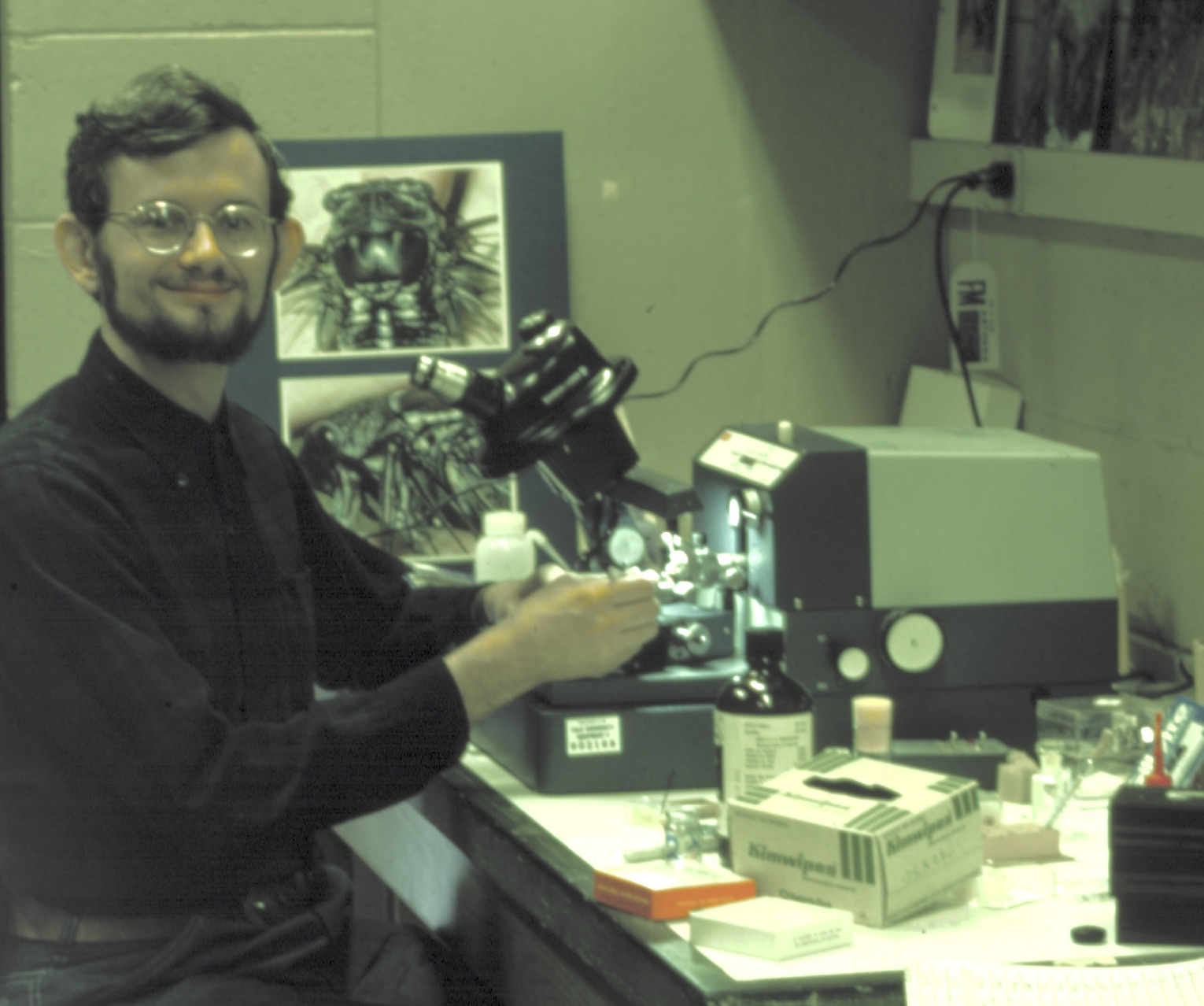 To fill that gap, I audaciously proposed slicing a single half-millimeter ganglion into 5000 serial sections, reconstructing nerve cell shapes from those
sections, and describing their synaptic organization by electron microscopy. (Physiological identification of each nerve cell in that specimen was
generously provided by Dr. Selverston; I myself never became adept with that procedure.) Remarkably, publications reporting the
results of my dissertation project are still being cited five decades later.
To fill that gap, I audaciously proposed slicing a single half-millimeter ganglion into 5000 serial sections, reconstructing nerve cell shapes from those
sections, and describing their synaptic organization by electron microscopy. (Physiological identification of each nerve cell in that specimen was
generously provided by Dr. Selverston; I myself never became adept with that procedure.) Remarkably, publications reporting the
results of my dissertation project are still being cited five decades later.
In spite of my early impression at Purdue that I did not care for histology, I continued honing my skills in that technology. I had
discovered that examining serial thin sections with electron microscopy could enable localization of synaptic-level detail of the branches of specific, identified
nerve cells. I had found an approach to biology that suited me remarkably well, developing techniques that subsequently sustained my research into fly
anatomy as a postdoctoral fellow at Yale (in Robert Wyman's
neurogenetics lab) and as a zoology professor at SIUC.
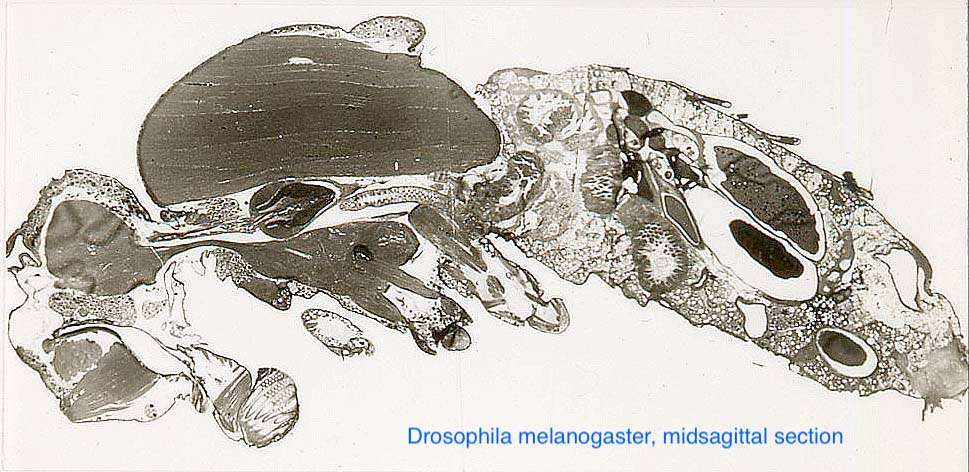
Throughout graduate school and postdoctoral research, my histological experience had been limited to studying invertebrate tissue. I had never taken a course in histology, nor had I studied any human anatomy or physiology beyond the nervous system.
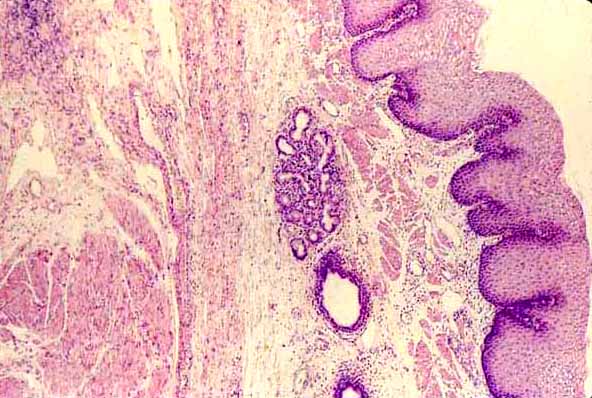 Nevertheless, in 1978 I was hired by SIUC School of Medicine to teach human histology to first-year medical students. My first couple years at SIUC were therefore quite effortful, acquiring enough knowledge and building a sufficient collection of micrographs to sustain that teaching assignment. Twenty years later that image collection supported creation of a very popular internet histology resource to help students learn this discipline.
Nevertheless, in 1978 I was hired by SIUC School of Medicine to teach human histology to first-year medical students. My first couple years at SIUC were therefore quite effortful, acquiring enough knowledge and building a sufficient collection of micrographs to sustain that teaching assignment. Twenty years later that image collection supported creation of a very popular internet histology resource to help students learn this discipline.
Genetics
Throughout the 1970s I had been much too busy becoming a "neurobiologist" to keep up with developments in the rapidly expanding field of molecular genetics. Even while working in a Drosophila neurogenetics laboratory at Yale, I concentrated nearly all my attention not on the genetics of those flies but on their microscopic anatomy. Before I could write effectively about the evolutionary significance of repetitive DNA, during the 1990s and 2000s, I had a lot of catching up to do. Nevertheless, a seed for my eventual engagement with evolutionary genetics had already been planted during my senior year at Purdue.
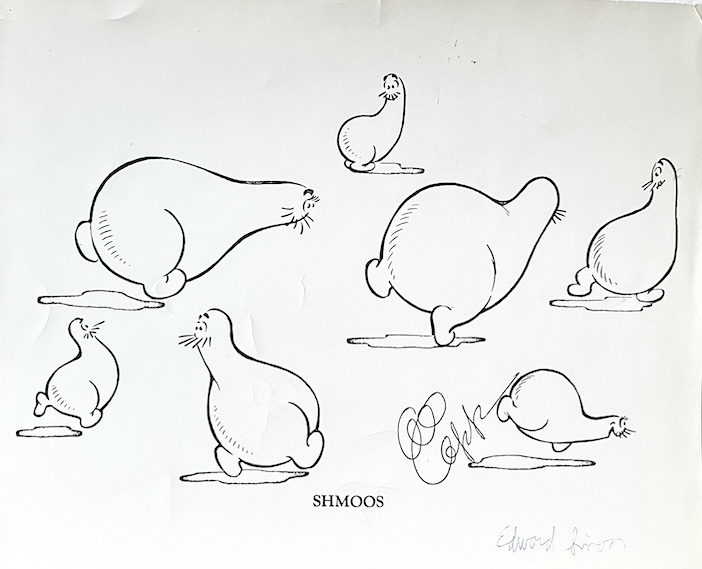
The genetics course in Purdue's core biology curriculum was taught by a gifted pedagogue, Professor Edward H. Simon. In addition to scientific work, Simon published The Challenge of Genetics, a book of Problems Designed to Enlighten and Stimulate Students of Genetics. In his lectures, to avoid distracting students with too many complex details of real organisms, Simon adopted "schmoos" (image at right) as his favorite examples. Schmoos had been famously invented by cartoonist Al Capp, for his comic strip Li'l Abner. These marvellous creatures were able to turn themselves into anything that any other character wished for. Simon's schmoos could be imbued with whatever traits would best illustrate any particular aspect of genetics. (At the end of each term, Simon would award his highest-scoring student with an autographed print of schmoos.)
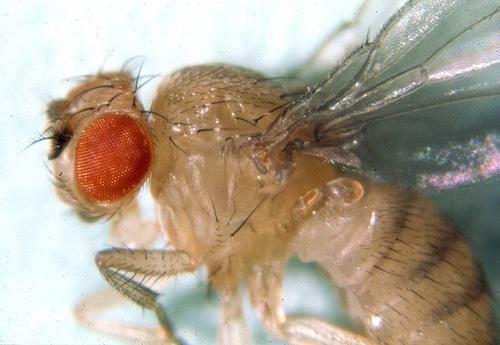
During his final lecture of the semester, one whose content would not be included in his final exam, Professor Simon presented a surprising case for the impossibility of evolution. He argued -- using estimates for the maximum numbers of organisms, cells, and DNA molecules that could ever have existed -- that the full span of geological time was far too brief for the evolution of all the different protein molecules now extant. I was puzzled, and a bit shocked. Why had Simon chosen to share this argument, especially during a period when the teaching of evolution was under intense political attack by religious fundamentalists? Could he, I wondered, have been challenging his students to find a flaw in his argument? Might there be some principle of genetics which could overcome the paradox he had presented?
Nearly thirty years later, while revisiting my alma mater in 1998, I stopped by Prof. Simon's office to say hello and to proudly show him the Trends in Genetics article that I had just published with Morris (Moshe) Soller. "Moshe!" he exclaimed, "He's an old friend of mine." Small world. But during our brief conversation I learned that Simon was himself a religious fundamentalist (albeit Jewish rather than Christian; he always wore a yarmulke to class). He really did NOT believe in an entirely mechanistic process of evolution. He had been prudent enough not to question evolution during regular class time, and wise enough not to base his anti-evolution argument on anything but science. Whatever his intent had been three decades before, my imagined interpretation of his long-ago lecture -- that something of significance might be missing from evolutionary theory -- lay dormant for over a decade before germinating into my appreciation for "metaptation."
Evolution
Evolutionary ideas had always permeated my natural history reading, but not until after graduate school did I begin to embrace "evolution" as an area of special academic interest. Loren Eiseley's books The Immense Journey and Darwin's Century had impressed me long before, but Purdue's core biology curriculum had not included a course focused on evolutionary principles. Neither did SIUC's Zoology Department offer an evolution course until I introduced one myself. I was finally drawn irresistably toward evolution by Steven Jay Gould's essays in Natural History magazine. Through such reading I gradually realized that adding a comparative, phylogenetic approach to my fly anatomy research might open up a niche for research with less competition than mainstream neurobiology. Without Gould's personal encouragement, in his response when I sent him a fan letter in the early 1980s, I might have lacked confidence to pursue further work in evolutionary theory.
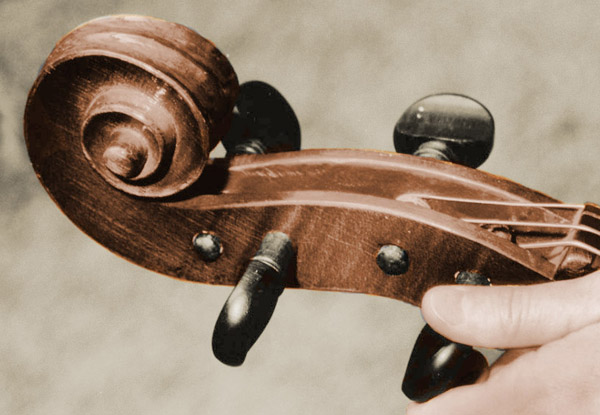
With that shift in focus, my style of research began a transformation from simply describing characteristics of individually identifiable nerve cells to inquiring into features of biological organization that might facilitate the evolutionary malleability of animal behavior. How might the specific attributes of neurons evolve (cf. "Behavioral Adjustments," 1997; "Giant Axons," 2013)? Thus was born the concept of "metaptation," followed by the obvious question: How might metaptation be implemented by molecules? That question led me to imagine "evolutionary tuning knobs" based on repetitive DNA. (Two of my several papers advocating for the idea that mutations in tandem-repetitive DNA can advantageously adjust gene function have together been cited over a thousand times.) Once such genetic tuning knobs turned out to exist in the real world of molecular genetics, I began to realize that the grammar of the genome might be parsed into more than just "genes" and "junk," to include a variety of "mutation protocols" that promote evolvability.
If "negative inspiration" can be a thing, my lack of formal education in evolutionary biology might have been essential for my subsequent development. By "virtue" of this deficit, I had inadvertently avoided becoming indoctrinated into the deeply-entrenched belief that natural selection must necessarily minimize mutation rates. I learned how severely this belief had distorted the field of evolutionary genetics only after I had acquired the intellectual tools to dismantle it.
The evident reality of genetic tuning knobs encouraged me to continue challenging dogmatic understanding of mutation, in publications and presentations throughout the final decades of a career whose direction had shifted quite far from the nerve cells where it had begun.
"Few can foresee whither their road will lead them, till they come to its end."
Legolas, in The Two Towers, by J.R.R. Tolkien
History and philosophy
They say that aging scientists commonly turn to history or philosophy.
Many of the biology textbooks which I studied over the years included brief historical notes about the founders of the discipline. These were typically hagiographic, emphasizing what those pioneers had discovered, not how they might have erred. More substantial engagement with the history of ideas in biology, particularly in evolutionary biology, came with reading Loren Eiseley and Steven Jay Gould. From Eiseley I learned that the products of evolutionary adaptation elude simplistic explanation. From Gould I learned the limits of strict adaptationism. Gould's writing also taught me that challenging orthodoxy can bring hazard as well as potential reward: Heretical ideas might not be readily appreciated by most of one's colleagues, even after those ideas have been supported by abundant empirical data.
As my retirement approached, I introduced a seminar/discussion course on the history of ideas in biology,
hoping to engage students with the epistemology underlying reliable scientific knowledge.
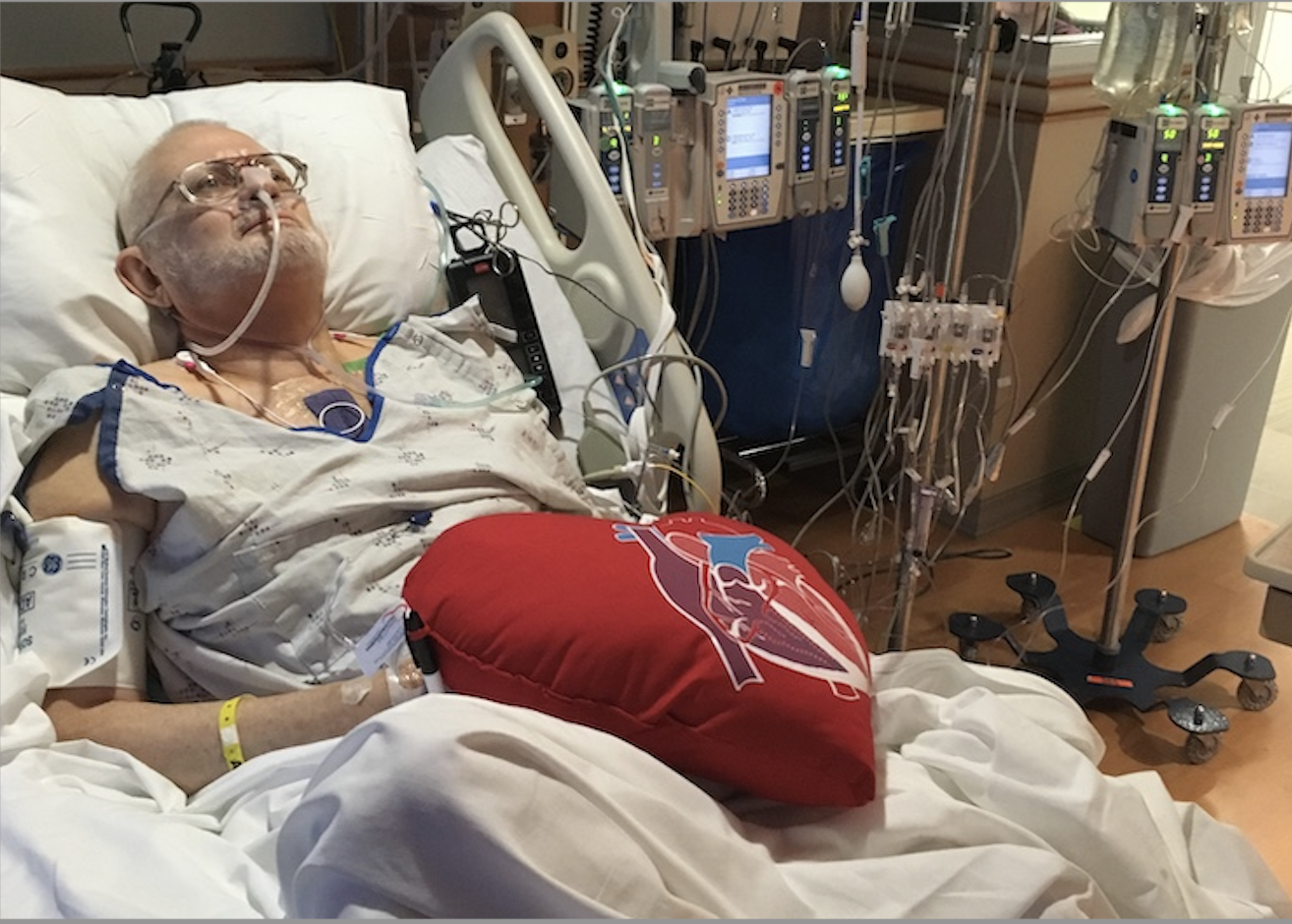 For one of my last publications before retirement (in 2012), I very intentionally
collected historical examples, gleaned from several of the leading lights of evolutionary genetics, to illustrate
how faulty epistemology had warped our current understanding of mutation.
For one of my last publications before retirement (in 2012), I very intentionally
collected historical examples, gleaned from several of the leading lights of evolutionary genetics, to illustrate
how faulty epistemology had warped our current understanding of mutation.
But I was growing tired, without much mental stamina for engaging with professional literature. When I officially retired in 2014, I did not yet know that stenosis of my aortic valve was severely compromising my heart's output. Time passed. In 2019 a surgeon replaced that valve with tissue cunningly crafted from bovine pericardium. I owe my continuing life not only to that surgeon but also to an anonymous cow! (I also credit thousands of miles of running and bicycling for contributing to speedy recovery from open-heart surgery.) More time passed. I amused myself by resurrecting my histology website and by writing notes on the history of histology.
Then, in 2023, I received a surprise invitation to write an essay for a special "physiology of evolution" issue of The Journal of Physiology, which appeared in print early in 2024. That was followed a few months later by a brief essay for Trends in Genetics, highlighting the same topic as the J. Physiology paper. Another brief essay, this time for Trends in Ecology and Evolution, appeared early in 2025. All three essays promote a reconsideration of the nature of "mutation," reprising the "metaptation" theme from 1985 and 2010. In March of 2025, I landed an e-letter in Science, citing my two 2024 publications. Complete retirement from academia is evidently easier said than done...
* * * Coda * * *
Once upon a time, a 1963 article in Scientific American had helped
spark my interest in neuroscience. In 1978, my own
neuroscience work would be mentioned in an article in that same magazine ("Microcircuits in the Brain," by Gordon Shepherd). In
1999 my initial work in evolutionary genetics was also acknowledged in yet another
Scientific American article ("DNA Microsatellites: Agents of Evolution?" by E.R. Moxon & C. Wills). These mentions
are not academically prestigious, but the high school student reading
Scientific American in 1963 would surely have been
pleased.
And yet nature appreciation remains my abiding interest, with nature photography as a closely-related hobby. I still occasionally notice a phenomenon which I had somehow previously overlooked, such as "frost flowers" (at left) extruded on a frigid morning from the desiccated stem of a previous summer's dittany. Or the "belt of Venus" (the pastel pink band bordered by deep blue, at right, appearing in the western sky at sunrise), which I only recently understood to be the edge of Earth's shadow.
| And of course I remain fascinated by insects. (This flying fuzzball with a beak appears to be Bombylius major.) | ||
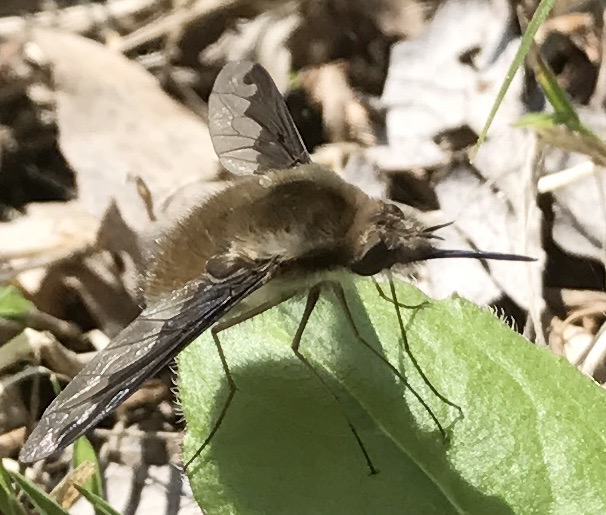 | ||
|
The Road goes ever on and on |
|
poem by Bilbo Baggins |
| |
Top of this page | Prof. King's home page | Annotated list of publications
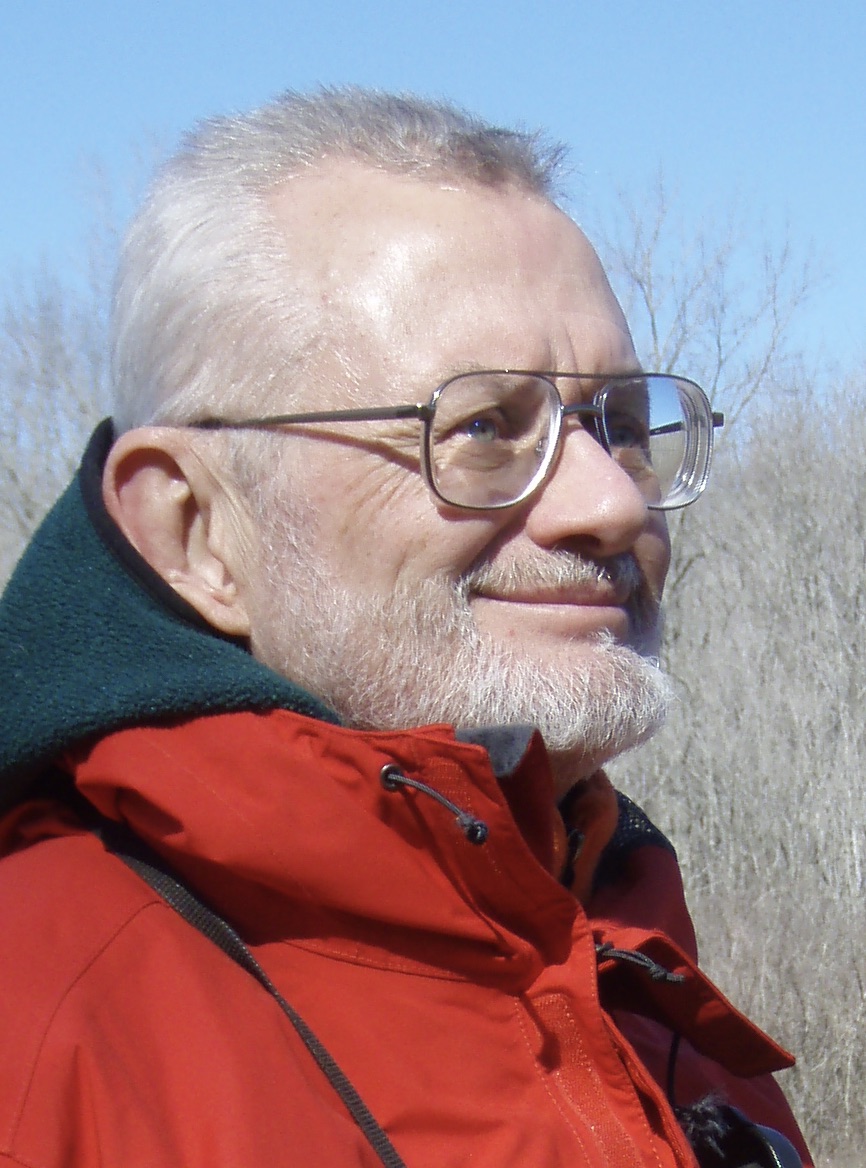
Comments and questions: dgking@siu.edu
SIUC / Zoology / David King
https://dgkinglab.siu.edu/epilog.htm
Last updated: 12 December
2025 / dgk
